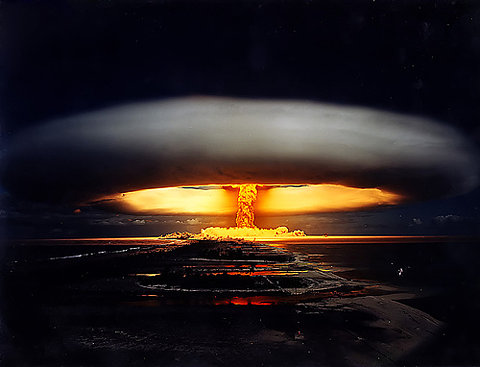| Online: | |
| Visits: | |
| Stories: |

| Story Views | |
| Now: | |
| Last Hour: | |
| Last 24 Hours: | |
| Total: | |
China is Preparing for a First-strike Nuclear War with the United States
China’s missile tests may signal end of nuclear no-first-use policy
For decades, China’s military has claimed a defensive “no first strike” policy for nuclear weapons, meaning that they would not use nuclear weapons until after surviving a nuclear strike by an enemy, particularly the United States.
However, developments associated with the recent tests of the nuclear-capable WU-14 hypersonic missile suggest that China is now focusing on offensive preemptive nuclear strikes, rather than purely defensive responses.
The WU-14 is a major advance in China’s military capability. A conventional intercontinental ballistic missile is shot in an arc higher than the atmosphere and allowed to fall to the target.
American missile defenses are thought to be capable of detecting and intercepting attacks of this kind.

The hypersonic missiles under test work differently. They’re still carried up by ballistic missiles, but they’re released while still in the atmosphere, and they’re allowed to glide almost horizontally to their targets at almost 8,000 miles per hour.
Because they travel so fast, they’re thought to be able to defeat America’s current missile defenses. The systems provide enhanced precision, speed, range, maneuverability and multiple-targeting.
In actual practice, the Chinese would launch simultaneous missile attacks, combining traditional ballistic missile attacks with very high speed hypersonic missiles coming in at low altitudes.
“It makes the defense problem orders of magnitude worse for the defender,” according to one analyst.
The hypersonic missile is capable of delivering either conventional or nuclear weapons. It’s thought that China has between 500-1000 nuclear weapons, stored in a vast network of tunnels.
The tunnel network is often called China’s “underground great wall.” There are some 3,000 miles of tunnels, hundreds of meters underground, deep in mountain areas, difficult to detect from space spy satellites.
Details of the tunnels have not been publicized for obvious security reasons, but it is known that they are scattered across China and are not all connected to one another.
They are designed to withstand nuclear and conventional attacks. Rail lines and trucks move missiles, related equipment, and personnel within the network. All the activities necessary for launch preparation can be done in the tunnels.
Although China has not announced any change to its no-first-use nuclear policy, there are some signs. China’s official defense documents now make no mention of no-first-use.
China’s president Xi Jinping made no mention of no-first-use during a visit to China’s Second Artillery Corps to congratulate them on the development of the WU-14.
The Second Artillery Corps has developed the WU-14 with both conventional and nuclear capabilities, and the same people worked on both sides.
In open discussions of the systems, nuclear no-first-use is rarely if ever mentioned. Instead, the discussions have been on the pre-emptive nature of these systems.
This is not proof that China has abandoned its no-first-use policy.
But China has been rapidly building its military for years with a variety of weapons and missile systems that have no other purpose than to preemptively strike American aircraft carriers, American military bases, and American cities.
Generational Dynamics predicts that China is preparing for pre-emptive war with the United States.
It stands to reason that the developers of these massive military capabilities would not hesitate to use a nuclear weapon in a pre-emptive strike if they believed that it gave them a significant military advantage.



